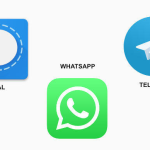ChatGPT recently introduced a voice mode that promised natural conversations, but many users find it clunky, robotic, and far from what they expected. Instead of delivering smooth, human-like interaction, the current voice experience often feels limited and awkward, leaving people searching for better alternatives. In today’s fast-paced digital world, where voice assistants play a growing role in daily life, performance and usability are everything.
The good news? You don’t have to settle for frustrating results. Smarter, more advanced tools exist that make voice interactions seamless, engaging, and actually helpful. If ChatGPT’s voice mode feels underwhelming, it’s time to explore an option designed to meet modern needs and elevate your interaction with AI.
The ChatGPT Voice Problem
ChatGPT’s voice mode sounds exciting, but in practice, it’s often frustrating. Beyond frequent connection hiccups, it sometimes fails to register speech at all, leaving you talking for half a minute before realizing nothing was captured.
Even when it does respond, conversations feel stiff and unnatural. The waveform animation often freezes or shows static dots, making it unclear if the AI is still listening. This adds to the confusion.
Emotionally, ChatGPT struggles even more. Instead of flowing naturally, it tends to loop back by paraphrasing your question rather than answering it. While text prompts showcase ChatGPT’s intelligence, its voice interactions often feel robotic, disrupting the natural rhythm of a conversation.
Despite gradual improvements, these issues persist. For many users, especially paid subscribers, the experience remains underwhelming and far less helpful than expected.
Read More: Boost Your Internet Speed Instantly with This Simple DNS Trick
Pi AI: A Smarter Conversational Assistant
Pi AI takes a fresh approach to voice interaction. Built by Inflection AI with emotional intelligence in mind, it feels less like talking to a robot and more like chatting with a supportive friend who remembers details you share.
Unlike ChatGPT’s formal tone, Pi responds casually, with humor and warmth. While it’s not a substitute for genuine friendships, it can offer comfort or engaging conversation when others are unavailable.
Accessible on Android, iOS, and the web, Pi AI offers a consistent voice experience across devices. Its simple interface requires no sign-in for web access and provides eight natural-sounding voices. On mobile, an account is needed, but the setup is minimal.
Most importantly, Pi’s voices sound more human and conversational. Instead of aiming to be a productivity powerhouse, Pi prioritizes connection—making interactions feel smooth, relatable, and genuinely enjoyable.
Emotional Adaptability That Feels Human
Pi AI stands out for its ability to read context and respond with empathy. When conversations become stressful, offer supportive replies instead of overwhelming you with facts. Unlike ChatGPT, which tends to agree with everything, Pi challenges your views when needed—giving a more balanced perspective that feels authentic.
Its emotional adaptability makes conversations smoother and more natural. Pi adjusts tone based on your mood, shifting from playful to severe or even comforting. This flexibility fosters a dialogue that feels more akin to conversing with a supportive coach than a digital assistant.
Beyond casual chat, Pi AI is useful for goal-setting and personal growth. It can help break down objectives, track progress, and keep you motivated. In education, Pi provides simple, stress-free explanations, ensuring learners aren’t overwhelmed while tackling new topics.
Have Deeper Conversations With AI
Pi AI is designed for meaningful dialogue, making conversations feel natural and engaging. Instead of echoing your words or blindly agreeing, it understands the context, reads between the lines, and shifts its tone to match your mood—whether you need support, perspective, or just a casual chat.
That said, Pi isn’t built for technical tasks like coding or script generation. Where it truly shines is in everyday conversations, offering empathy and adaptability that most “smarter” AI chatbots lack. For users seeking genuine interaction over robotic replies, Pi AI is a far better companion.
Frequently Asked Questions
Why does ChatGPT’s voice mode feel unnatural?
ChatGPT voice mode often struggles with flow, context, and emotional tone. Conversations can feel robotic, with the AI paraphrasing questions rather than providing natural responses.
Is Pi AI better than ChatGPT for casual conversations?
Yes. Pi AI is built for empathy and context awareness. It adapts tone, remembers details, and creates more natural dialogue, making it better for everyday conversations.
Can I use Pi AI for coding or technical tasks?
Not really. Pi AI isn’t designed for programming or detailed technical queries. For those tasks, ChatGPT or other productivity-focused AI tools are better.
Does Pi AI work on both mobile and web?
Yes. Pi AI is available on Android, iOS, and the web. The voice mode works consistently across devices with a simple interface and natural-sounding voices.
Is Pi AI free to use?
You can use Pi AI for free on the web without creating an account. However, some features—such as app-based voice conversations — require sign-in.
Conclusion
ChatGPT’s voice mode shows promise, but its robotic tone, choppy flow, and lack of emotional depth make it frustrating for honest conversations. Pi AI, on the other hand, was built to connect on a human level. With natural voices, emotional adaptability, and context-aware dialogue, it feels more like talking to a supportive friend than a machine.











